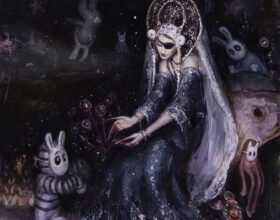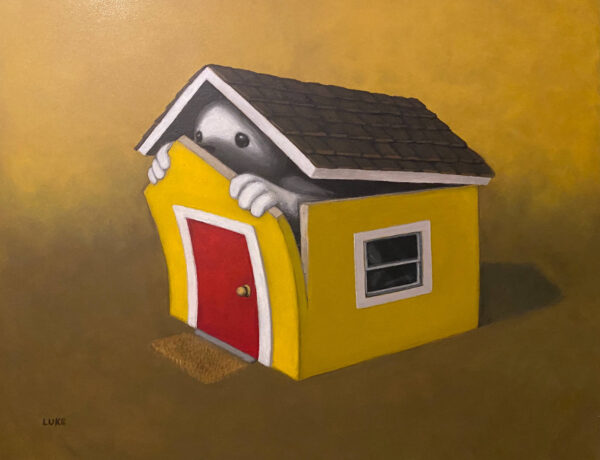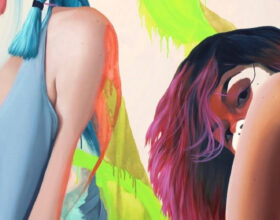PxP Contemporary is thrilled to announce collections by two new artists, Aunia Kahn and Karen Remsen. Their debuts into the PxP collective marks the gallery’s expression into more figurative artwork in 2024. It is especially exciting to be highlighting these two talented artists during Women’s History Month as both portray women in their work – Kahn in an illustrative style with touches of fantasy, and Remsen in a skilled representational style whose color choices border on the surreal. We invite you to enjoy their original paintings now on view and keep on reading to learn more about Karen and Aunia in these exclusive interviews.

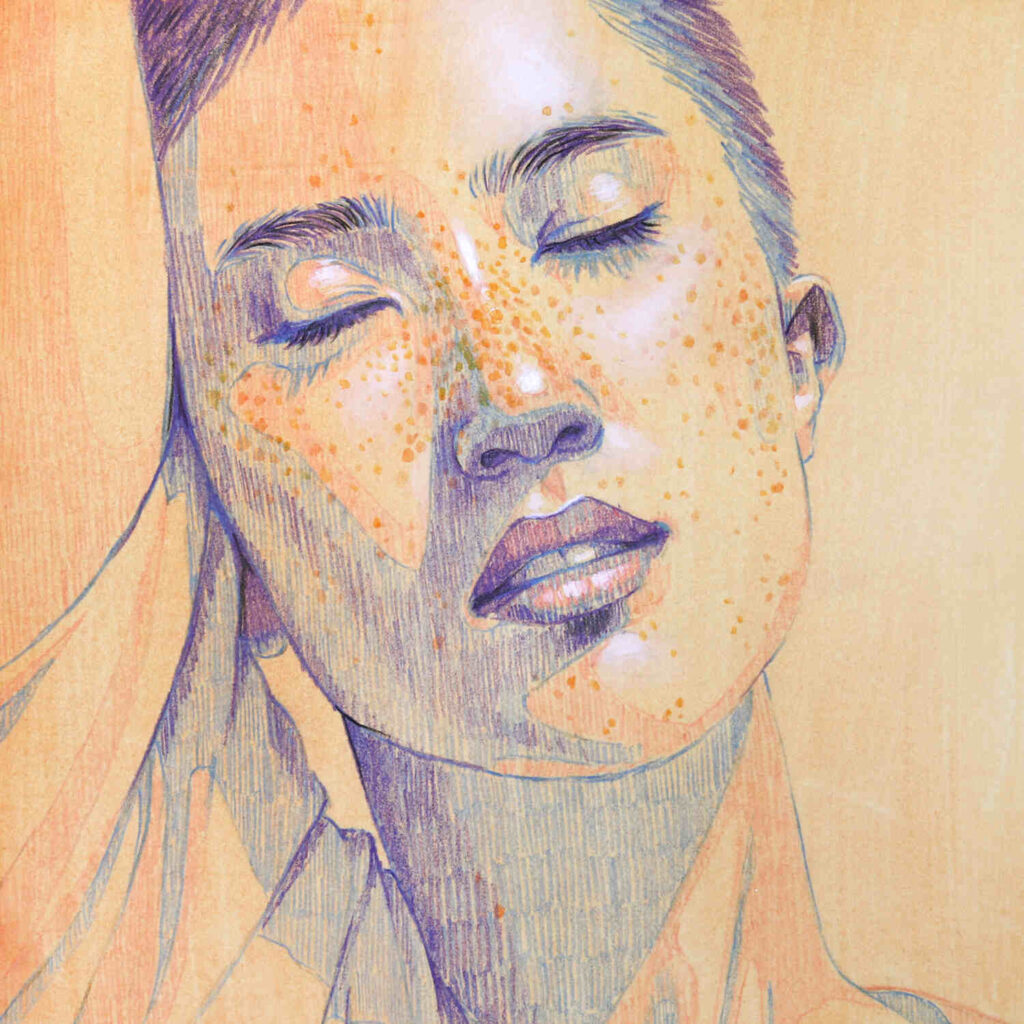
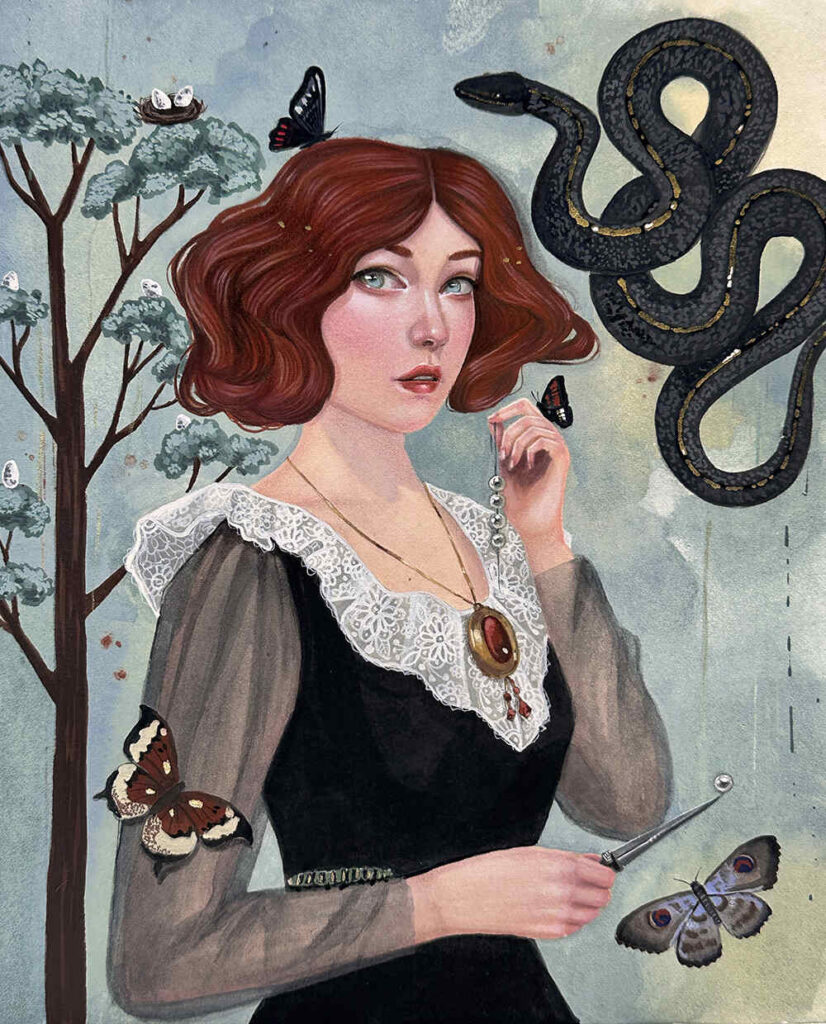
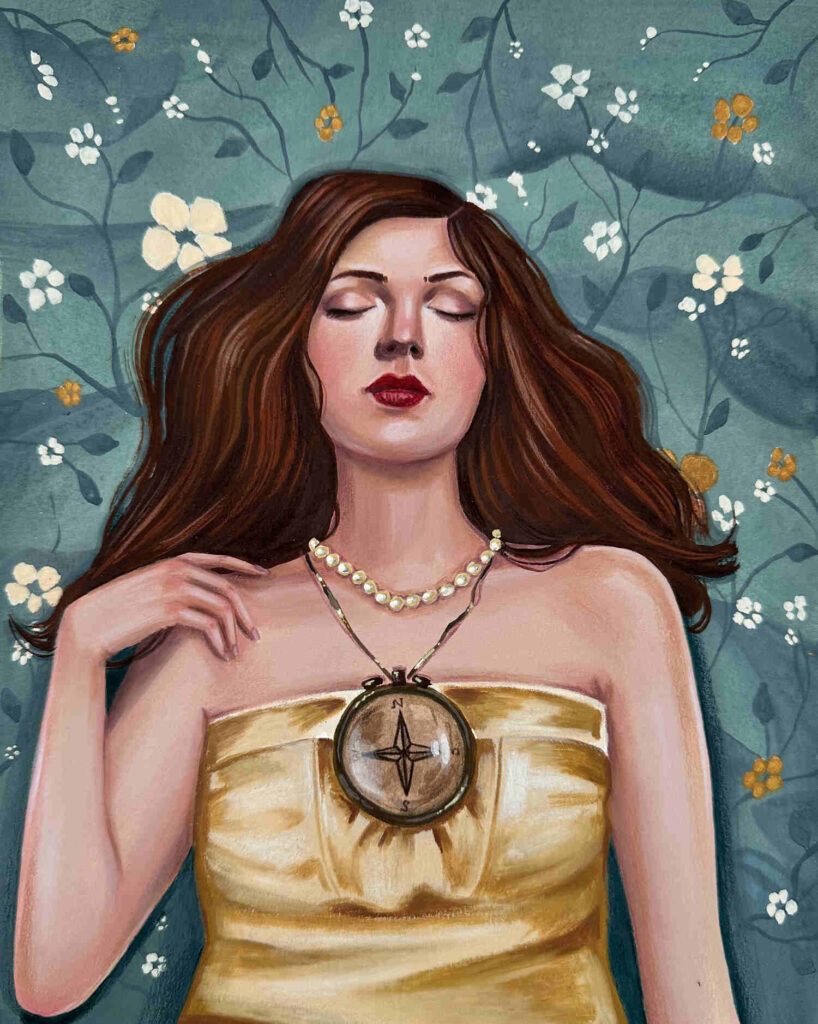
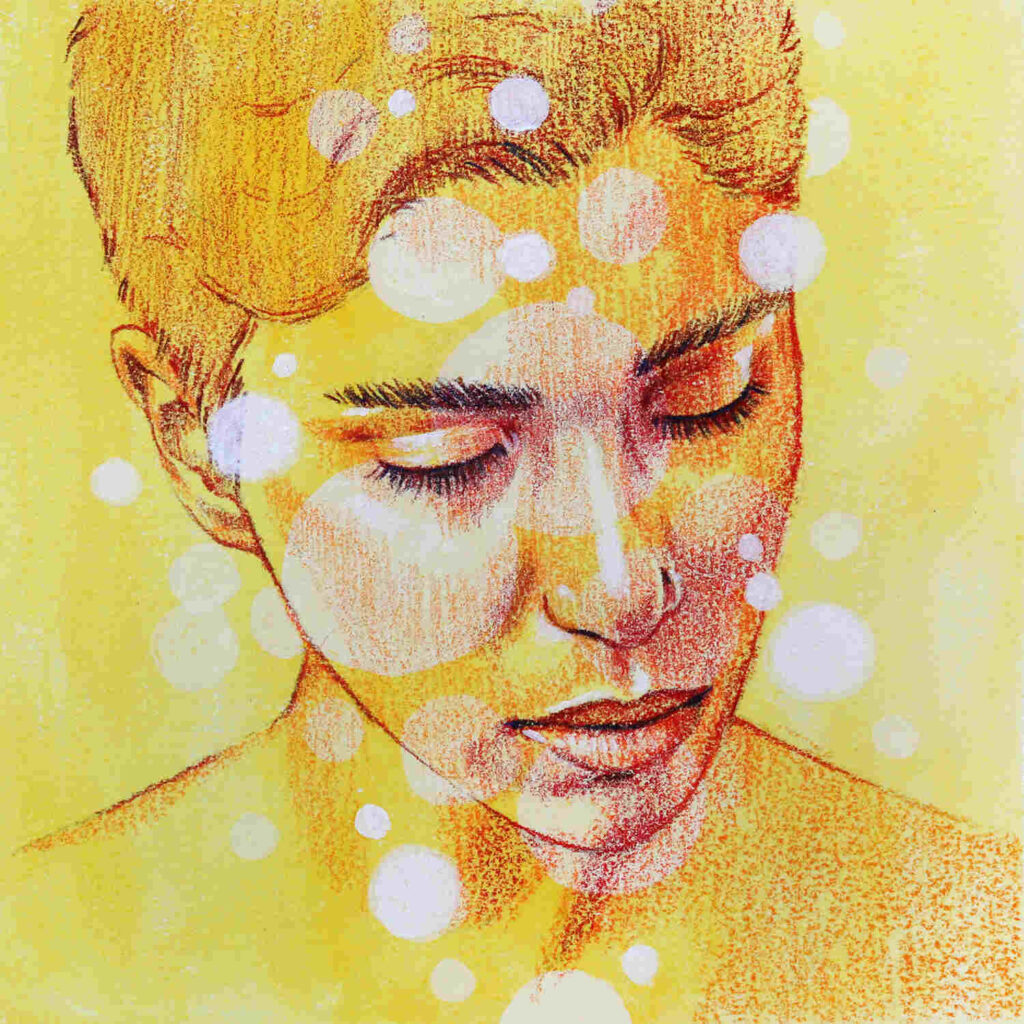
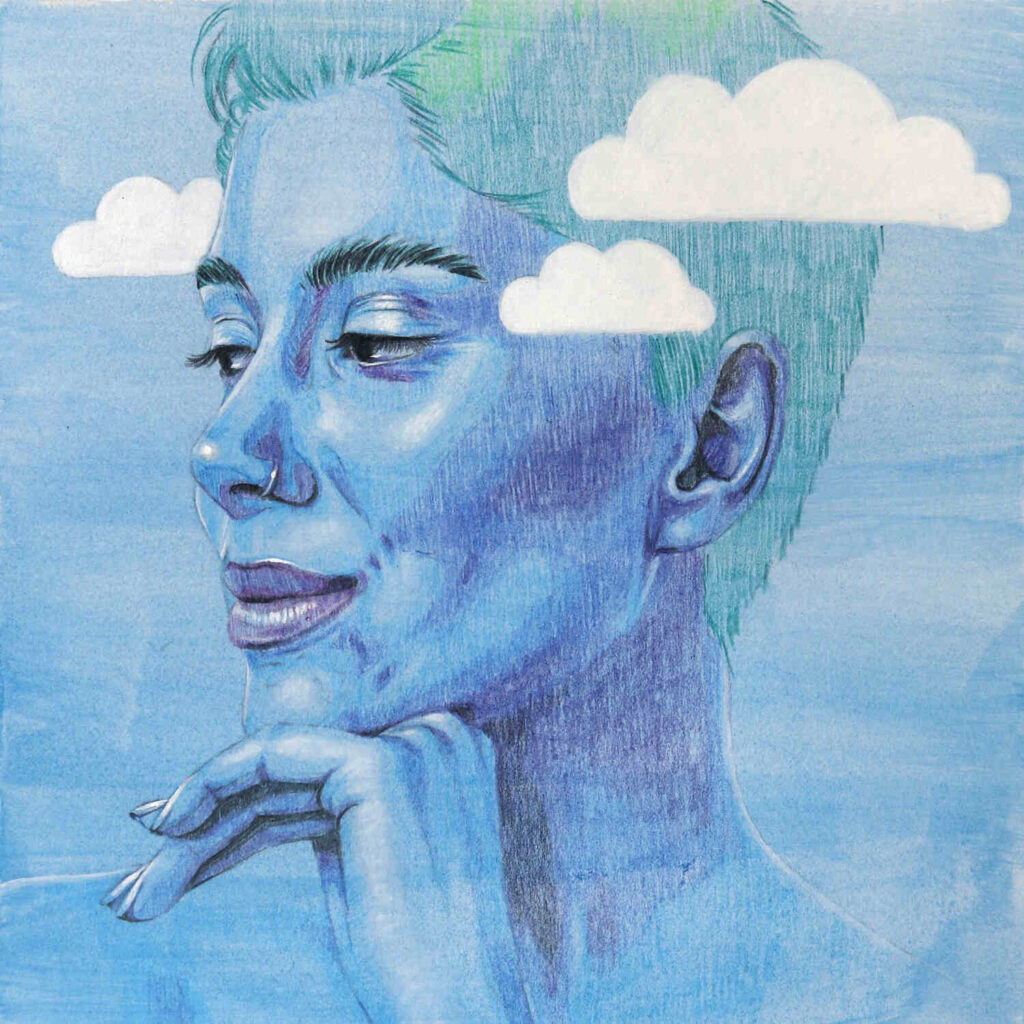
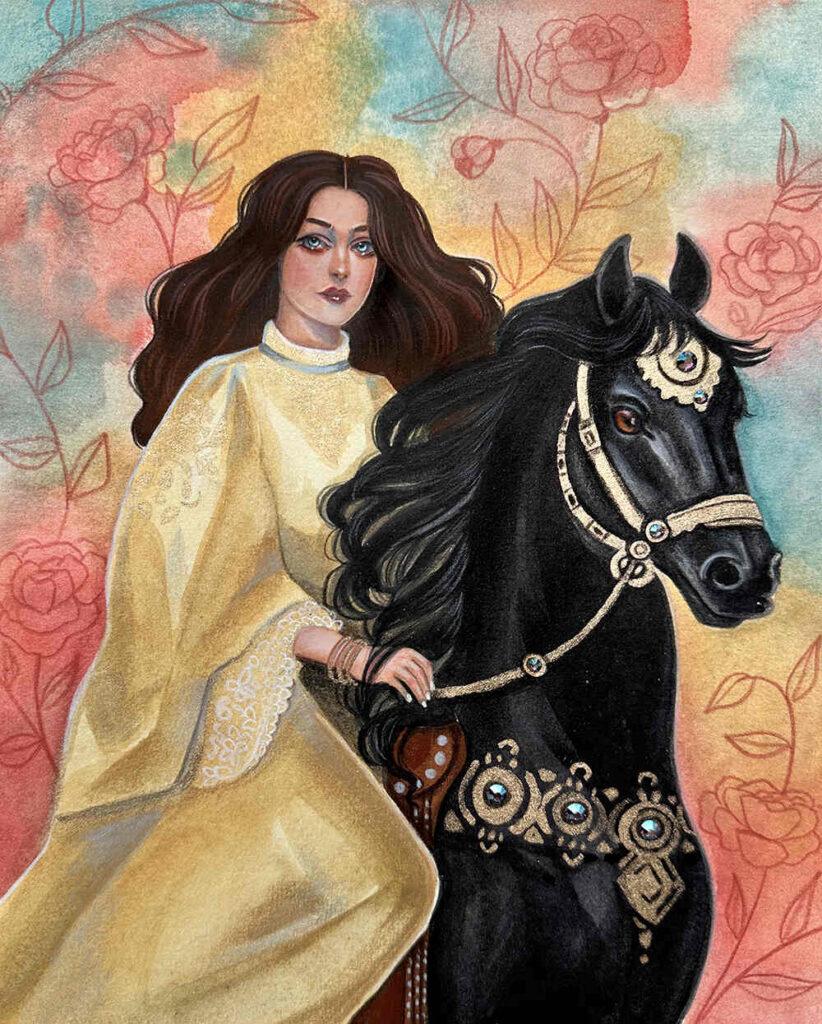
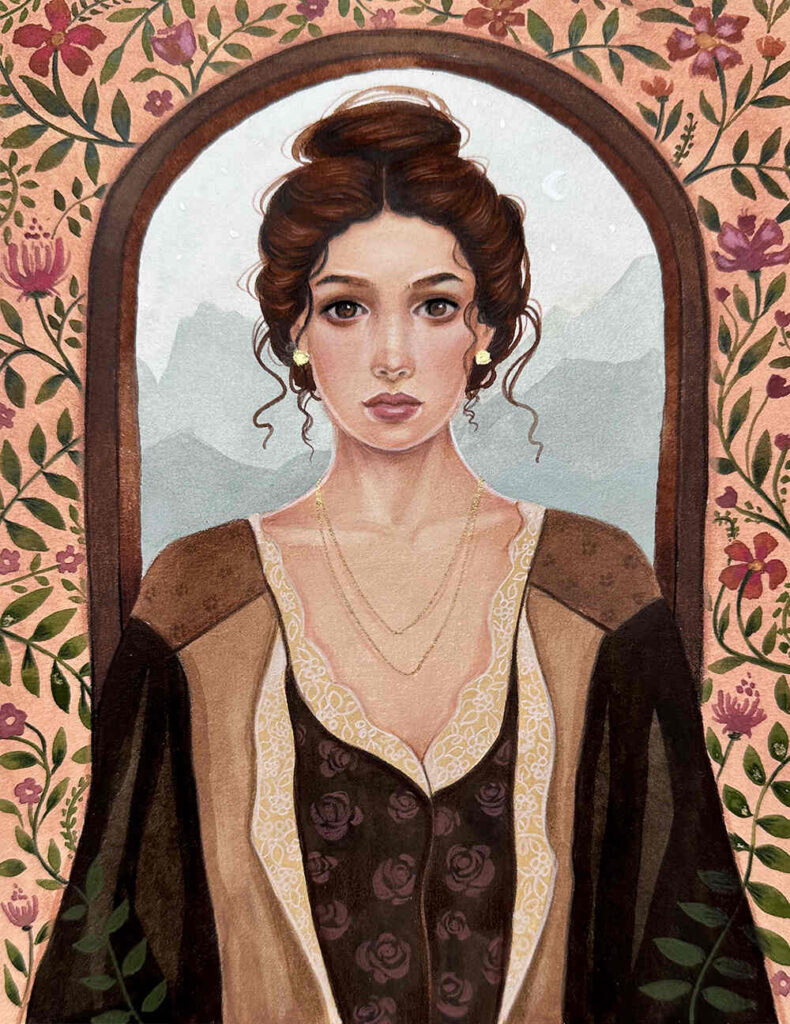
About PxP Contemporary//
PxP Contemporary is an online gallery that connects collectors with high-quality, affordable artworks. The gallery believes in transparent pricing, building meaningful relationships with our clients, providing exceptional customer service, and above all, supporting the talented artists that they work with and represent. CEO & co-founder Alicia Puig and co-founder Ekaterina Popova, with a combined 15+ years of experience working in the arts, launched PxP to challenge the traditional gallery model and make the process of buying art a more accessible, digital-friendly experience. Art lovers, whether looking to add to an already established collection or acquire their very first piece, can browse our curated selection of art priced up to $5,000 by contemporary artists from around the globe. As of December 2020, Alicia expanded the gallery mission by donating a portion of the proceeds of all sales to a variety of charitable causes.
For inquires regarding purchasing artwork please contact [email protected]
About Karen Remsen//
Karen Remsen is a Chicago-based and self-taught artist who rediscovered her passion for painting back in 2020 after a hiatus of nearly 15 years. She has exhibited across the country in galleries that champion imaginative realism and contemporary figurative work.
Interview with Karen Remsen
Women are the central focus of your work and there is something unique about reflecting on the feminine experience. Being a women can often feel isolating even when we collectively understand one another in some way. I’d love to hear more about your thoughts and reflections on femininity and the female experience!
This is an ongoing inquiry for me: why am I interested in depicting women? I suspect there is no single reason. Sometimes it helps me express a feeling or an emotion I’ve experienced. Sometimes it’s a reflection of a characteristic I admired in another woman. Sometimes it’s an aspiration of how I want to feel and move through the world.
In some ways, I wish it wasn’t necessary for me to think within any definition of femininity or gender. My own experience has taught me that men and women and people are not really that different, and that many divisions to which we cling are baseless fabrications. But at the same time, I can’t help but feel that there is something ancient and sacred about being a woman.


Who are your drawn towards when finding a muse to paint?
My paintings often start by finding a reference photo that I love. I have a huge reference library and am constantly adding to it – doing my own photoshoots, purchasing photos from other photographers, or finding free photos online. Every time I get access to a new set of photos, I go through all of them one-by-one and pick out the maybe top 5% that stick out to me. Many paintings can stem from a single photoshoot. I have one model that I’ve painted 6 or 7 times now.
I don’t have any specific criteria for choosing models or muses. One thing I have done deliberately is chosen women from a range of ethnic and racial backgrounds. I believe wholeheartedly that humans are beautiful because we are diverse. However, I acknowledge that I have chosen mostly young and conventionally attractive people. I hope to branch out to be more inclusive of more different ages and body types in the future. It makes me a bit nervous though! It means challenging my own biases about beauty and trusting that my work is strong enough to capture interest without the inherent attention-grabbing nature of my typical subjects.
Who are some of the women who inspire you?
When I was a child, my local art museum hosted a traveling exhibition of work by Orazio and Artemisia Gentileschi. I was mesmerized by the fact that Artemisia painted with the same skill and style as her peers, but her art felt fundamentally different. Her subjects felt like the main characters of their stories.
My other big interest outside of art is reading, especially fantasy and sci-fi. There are so many amazing female characters written by female authors (N.K. Jemisin, Octavia E. Butler, Tamsyn Muir, and Robin Hobb are some of my favorites) and male authors as well (Garth Nix and Philip Pullman come to mind). I hope to make a collection in the future of paintings inspired by female protagonists in literature.
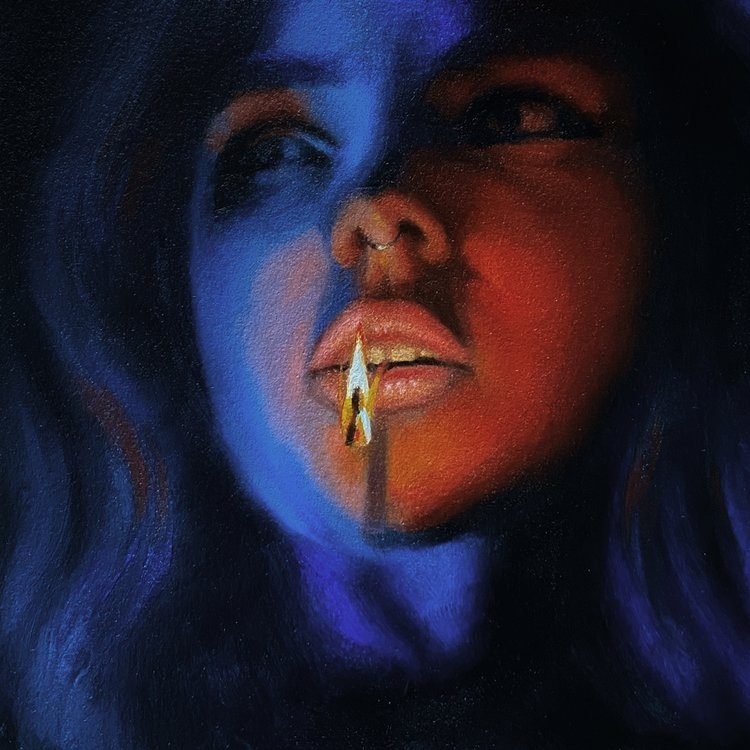
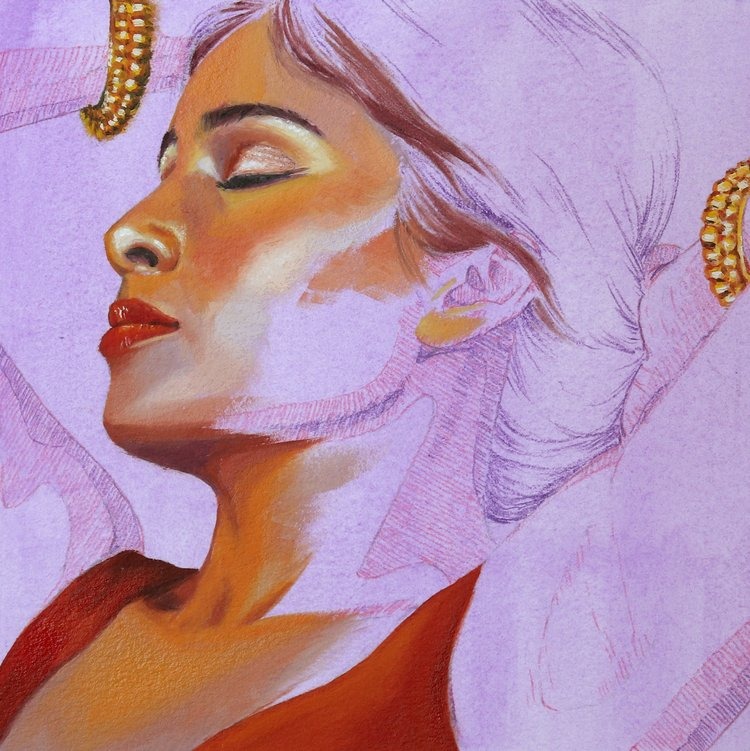
I understand that you took an almost 15 year long hiatus from art. What drew you back to practicing art once more?
I was feeling burnt-out in my career. I was a graphic designer for a few years after college, then transitioned into user experience design and research. By the time I was a few years into my 30s, I had been working in the tech world for many years and didn’t love it.
I just thought it would feel nice to paint something. I bought a canvas, some cheap brushes, and four colours of paint. A very strange thing happened; I found I could paint better than I could when I stopped as a teenager. I have no idea how this works psychologically. Maybe because our brains are still developing well into our 20s? Maybe we gain more skill in seeing shapes and colors and forms? In any case, after I made one painting I immediately wanted to make another!
I can’t help but feel that there is something ancient and sacred about being a woman.
What advice would you give to those who may have had a similar art hiatus and are looking to pick up a paint brush again?
Don’t wait a moment longer! :)
About Aunia Kahn//
Aunia Marie Kahn (B. 1977 Detroit, Michigan) is an award-winning American contemporary painter, photographer, curator, and entrepreneur. She has exhibited her artwork in over 300+ exhibitions in 10 countries and at institutions such as SDAI, iMOCA, and CAM St. Louis. Additionally, she had lectured at colleges and universities and has been featured by Yahoo, Prevention, and Authority Magazine.
Interview with Aunia Kahn
Your website says that you draw inspiration from your chaotic upbringing and near-death experiences which is a very powerful and vulnerable thing to do. Has art become a healer/form of therapy for you?
To be completely honest, I’m not sure I would be alive today without art in my life. During tumultuous times in my life, leaning into creativity as a source of solace, expression, and freedom from current circumstances was crucial for me to persevere.
Becoming an artist was never a goal or dream of mine. Despite my lifelong love for creating, whether it was art or building tree forts, it was never supported by anyone around me. My creativity was ridiculed and dismissed from an early age by my peers. As a peculiar child with unconventional behaviours, making friends wasn’t easy. Art and animals became my trusted friends – they were steadfast and always there.
I grew up in a blue-collar household that prioritized work and education above all else but also hid abuse and violence in the background. Later in life, my dream job was to be a therapist or even a surgeon, aiming to alleviate others’ pain after witnessing and experiencing so much suffering. However, my life took a drastic turn when I fell ill during my schooling, forcing me to completely rethink my path.
Creativity became my lifeline during the toughest moments of my illness, which sidelined me for nearly 20 years without proper support or diagnosis. Having a means to express myself and create artwork reflecting my experiences and inner world was deeply touching. Despite my limited ability to interact with the outside world due to my illness, sharing my creations on the internet and receiving positive feedback was incredibly empowering to me.
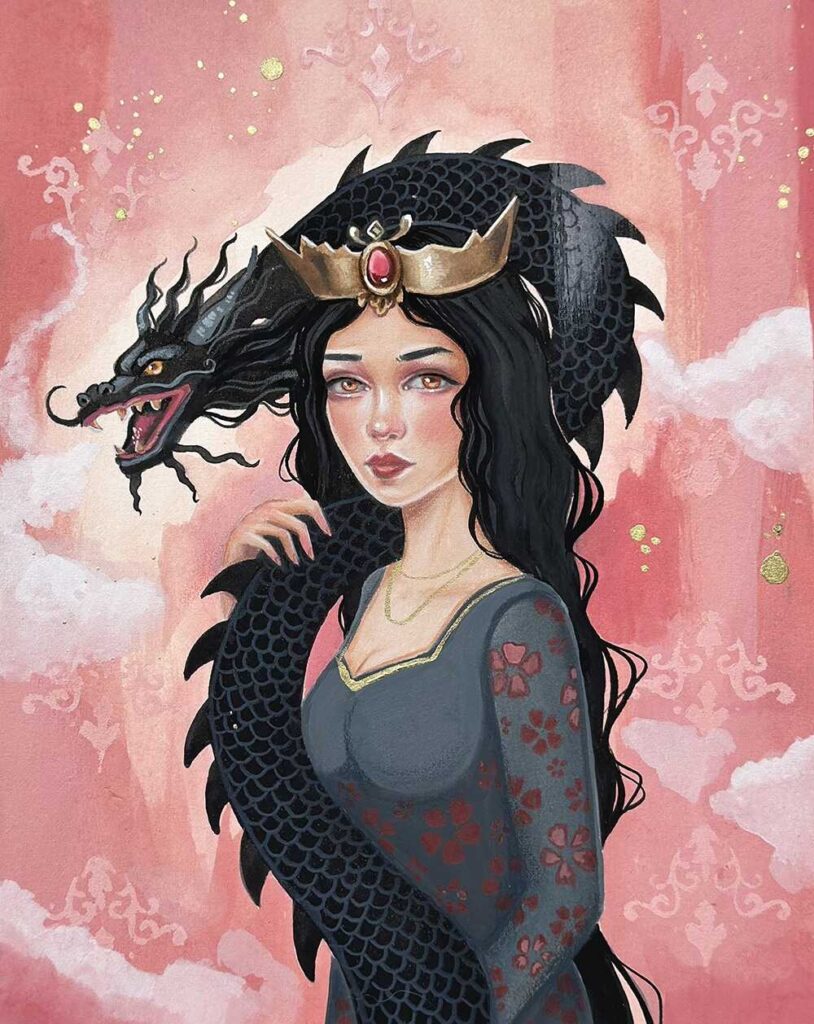
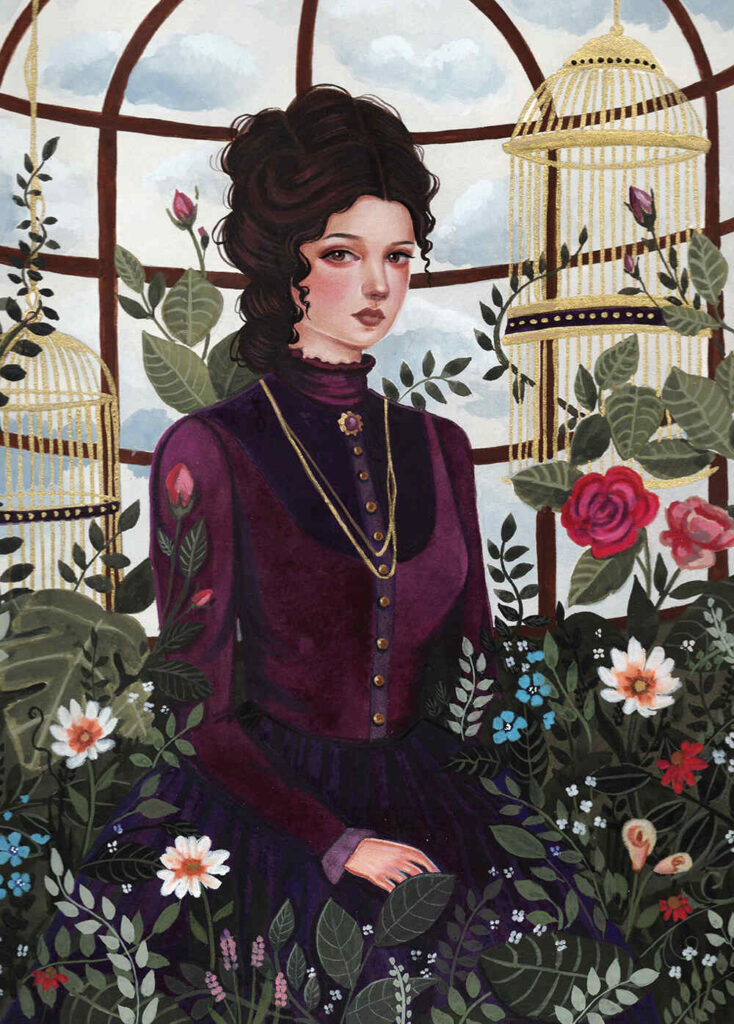
Who are the women represented in your paintings? Are they reflections of yourself?
It’s a tough question to answer definitively. Sometimes I lean towards yes, and at other times, I’m inclined to think otherwise. For an artist, it’s challenging not to have some aspect of themselves reflected in their work, even if their work is abstract. I believe all artists incorporate fragments of themselves into their creations, often unintentionally.
It feels nearly impossible for an artist to completely detach themselves from their work. My art, like that of many others, engulfs me, and I, in turn, am absorbed by it. It’s become an integral part of my life, akin to an additional limb. Trying to remove it would be like severing a vital organ; it’s something I couldn’t do without risking serious harm or bleeding to death. So, upon deeper reflection, yes, my work undoubtedly reflects aspects of myself. There’s simply no way it couldn’t. It’s a lifeline, a history, and when I look back over the years, I can watch the story of my life unfold through the pictures I have created. It’s pretty remarkable from a personal experience. My artwork serves as a visual narrative of my journey, capturing moments, emotions, and growth along the way.
Over the years your work has evolved and changed significantly. Your older works are much darker in tone and subject matter while your current body of work feels lighter and more whimsical. I think many artists worry about having one particular style that they have to stick to. Do you think art style naturally evolves over time as we get older and experience more of life’s trials and tribulations?
For some, embracing evolution comes naturally, while others must actively work at it or embrace it with open arms, which is not easy. As an artist, I have been open to evolution and adaptation because I had no choice. I began by painting and working in mixed media until I fell ill, then I became deathly allergic to all mediums (most food, etc.), even coloured pencils, which led me to transition to digital work. Being a digital artist in 2004/2005 was challenging and not as widely accepted in galleries as it is today. I had to fight to be seen and respected within the system, which was difficult, but I thrive on challenges. Tell me I can’t, and I’ll find a way.
Ironically, in 2018/2021, when I received medical diagnoses that changed my life, I also began taking medications that helped alleviate my severe allergic reactions to various mediums, foods and other things in my life. This allowed me to gradually return to using traditional mediums like coloured pencils, watercolour, and eventually gouache this year.
I yearned so deeply to work in traditional mediums that I was forced to evolve and start over. It felt like a failure to transition from being proficient in digital art, which I had been practicing from 2004 to 2020—16 years of honing my craft—to essentially starting from scratch. I didn’t know which mediums I preferred, how to use them, or the best paper or substrate to use. Here I am three years later, still working out the kinks. In a way, I’ve been in this industry for 20 years, yet I also feel like a novice all over again.
Despite being forced to evolve at times, I believe my work would have naturally progressed regardless. While the mediums may have changed, the shift from darker to lighter colors reflects the journey of my illness and the healing that has come with medications and proper medical support throughout the years. I believe one of the most crucial aspects of being an artist is continual growth and evolution, even if it’s uncertain. For instance, I have another body of work and an Instagram page called Mysterium World, which is experimental, naive, and incredibly fun. This endeavor keeps me expanding my horizons. It’s essential never to confine yourself to the same mediums, subject matters, substrates, and tools you’ve always used. I strongly encourage all artists to experiment, even if it feels uncertain at first.
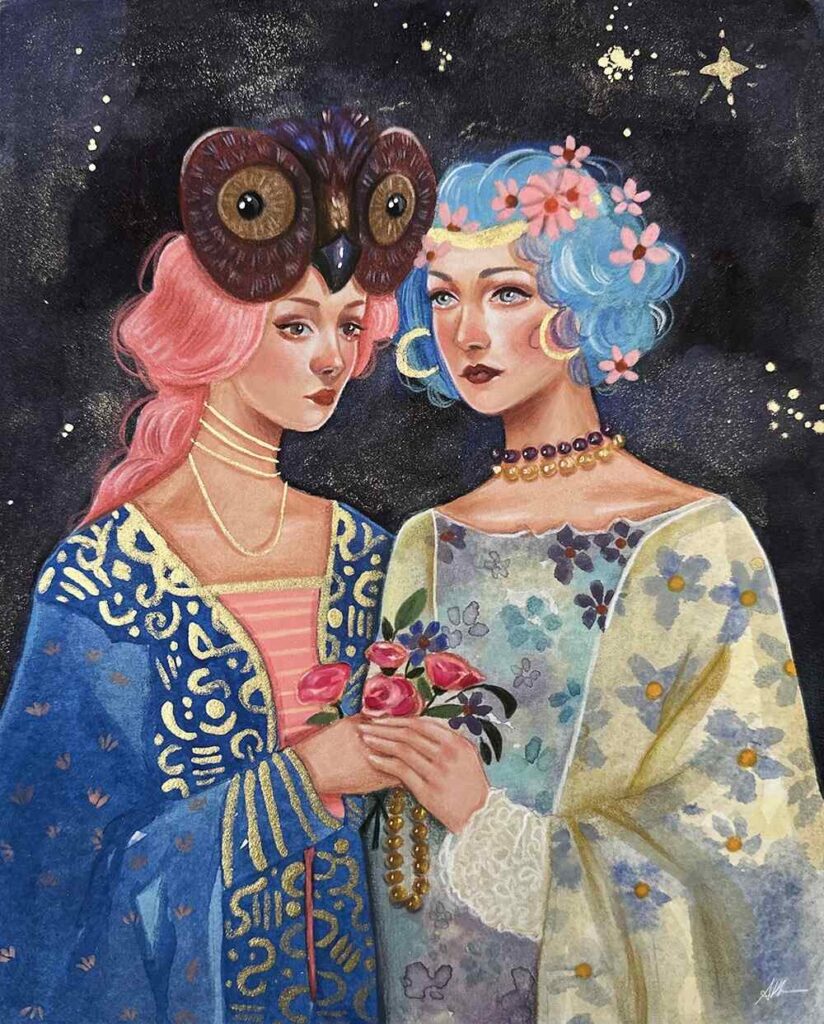

What is your favourite and least favourite thing about being a practicing artist?
I love being an art creator because even if no one saw it, I’d still enjoy doing it. Art, for me, goes beyond just technical skill and success. It’s about expressing personal stories, finding healing in the process, and exploring what I can create with my hands. Will I feel inspired today? Who knows? It’s exciting to work with my hands. It’s also fulfilling when others connect with my work. Knowing that my creations resonate with them is truly magical and one of the most gratifying experiences an artist can have.
The most challenging aspect of being an artist is the personal struggles I face regarding never feeling good enough. As a perfectionist with a Type A personality, I am driven and competitive with myself, and I perpetually feel inadequate. What I’ve come to understand is that I will never be enough. I’ll always be striving to become the best version of myself, and if I’m wise, I’ll never attain it. I’ll continue to grow and need to keep growing. However, I find this aspect to be the most difficult for me. Not being too hard on myself, not criticizing myself if I create something I dislike, and accepting that sometimes, I’ll love something that no one else does—this seems to be a recurring theme.
When I love something, no one cares, and when I don’t, everyone seems to like it. Trying to navigate through this is confusing and I have learned there is no rhyme or reason to any of it. If my goal was to please everyone and have universal approval for everything I create, I’d be sacrificing my passion and integrity. Instead of pursuing what I love, I’d be focused on manipulating the system to cater to others’ preferences. I would rather people dislike all my work than cater to anyone. Just being in the now, accepting who I am today and working to be a better version of myself tomorrow is my goal. I speak it, but it is not easy.
What has been the biggest challenge so far either in your career or personal life and how did you overcome it?
Both in my career and personal life, my most significant challenge was battling illness for almost 2 decades, with no one believing me, not even family members. After enduring countless consultations with hundreds of doctors who found nothing wrong, it’s understandable why they may have doubted me. However, I never gave up seeking help, searching for a diagnosis, and yearning for validation. I’m incredibly tenacious, as I mentioned earlier—tell me “no,” and I’ll find a way.
The situation became dire when I experienced numerous life-threatening allergic reactions, dismissed as mere anxiety. It reached a breaking point when I began questioning my own sanity, ultimately leading me to admit myself to the local psych ward for evaluation (where I was released shortly after, as there were no signs of mental illness because of the host of medical issues). Feeling utterly isolated, with no one believing me, was incredibly challenging. Being ill has posed challenges for me as an artist in advancing my career. For instance, I’m also a curator, and in 2010, I curated a couple of significant shows. However, my illness prevented me from attending these events, and I struggled to explain my absence because it took another 8-10 years to receive a diagnosis. This lack of clarity caused disruptions in my relationships with galleries, as I couldn’t reliably attend events that I curated or participated in as an artist. Despite my efforts, I couldn’t predict my level of sickness each day, which meant missing out on being present at important events, which was deeply disheartening.
Times have certainly changed, and the internet has played a significant role in my ability to make connections, advance my career, and maintain a presence despite my illness. Having a diagnosis to share with galleries has been crucial in ensuring they understand my situation and limitations. Additionally, being transparent about my chronic illness has required vulnerability and is scary at times, but it’s an integral part of who I am both personally and artistically. I attempt to avoid discussing it, but my illness is essentially my life story. It’s woven into the fabric of my being, shaping who I am today. I believe the world could benefit from more vulnerability and transparency. After all, everyone has their own struggles. My struggles have forged me into someone fierce and determined. I navigate life in a body that feels like a ticking time bomb due to my illness. In the face of this reality, I’ve learned that there’s no other option but to fully embrace all my challenges, imperfections, and humanity and make art along the way!
Karen Remsen Social Media Accounts
Website | PxP Contemporary | Instagram
Aunia Kahn Social Media Accounts
Website | PxP Contemporary | Instagram | Facebook | YouTube | Patreon


